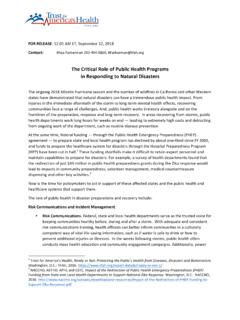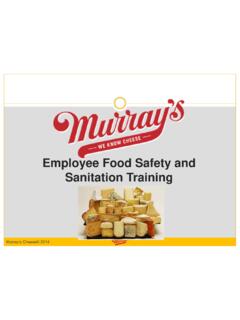The big 5 foodborne illnesses
Found 4 free book(s)The “BIG 5” Foodborne Illnesses
www.myfloridalicense.comThe “BIG 6” Foodborne Illnesses Hepatitis A Overview: Fecal-oral transmission, can be found in water and raw shellfish (oysters, clam, mussels), highly infectious; disease can be spread 2-4 weeks before any symptoms appear, children may show no symptoms but still spread the disease to others Prevention:
The Critical Role of Public Health Programs in Responding ...
www.tfah.orgdetect and contain public health threats, including mosquito-borne illnesses, foodborne outbreaks and other health threats that can emerge following a natural disaster. CDC programs such as the epidemiology and laboratory capacity program, vector-borne diseases, and advance
Employee Food Safety and Sanitation Training
www.cheesesociety.orgFoodborne Illness Risk Factors 1. Improper Holding 2. Poor Personal Hygiene 3. Inadequate Cooking 4. Contaminated Equipment 5. Food from Unsafe Sources Key Interventions 1. Demonstration of Knowledge 2. Employee Health 3. Time/Temperature 4. Hands a vehicle of contamination 5. Consumer Advisory
TAP FOOD SAFETY MANAGER REVIEW SHEET
assets.tapseries.comThe Danger Zone is between 41°-135°F or 5°-47°C. This is the range in which bacteria survive and grow. Between 70° & 125°F, 21° & 52°C, bacteria grow most rapidly. Minimizing time that TCS food are kept at this temperature lowers the opportunity for bacteria to grow. Above 135°F/57°C and below 41°F/5…



